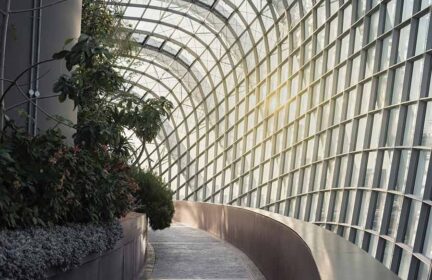Microalgae have recognized properties in many new areas. From lighting and home heating to air pollution control, the manufacture of biofuels, plastics, and even cosmetics, algae have many surprises in store for us! We're taking advantage of this article to reveal all their secrets.
Follow us today to discover how algae can be brought into your home to limit your environmental impact!
MICROALGAE FOR WARMING
Imagine a building where 100% of its heating needs and 50% of its hot water would be provided by spirulina . Well, this building exists. Built in 2013 in Hamburg, it has, on its 200m2 facade, tanks containing spirulina, photobioreactors ,
Thanks to the composition of the culture medium (nutrients and CO 2 ) and the sun exposure of the facade, the micro algae develop significantly and carry out their photosynthesis activity in complete peace. The heat released by their growth as well as that of the sun is then transported to a heat exchanger in the basement of the building to heat the domestic and sanitary water. The hot water thus recovered covers 100% of the needs for the domestic heating of the building and 50% of the running hot water . The remaining 50% is produced using a heat pump. However, micro algae are living organisms sensitive to temperatures that are too low or too high. A micro algae protection system is therefore provided to protect them from extreme climatic conditions.
Unfortunately, this type of building is currently very expensive to construct, but in the long term, engineers in charge of this type of project hope to be able to reduce their cost.
PAINT IN “GREEN”
Let's stay in the construction sector with a Breton company that uses micro algae, these natural and renewable components, to produce paint .
These algae-based products contribute to indoor air quality thanks to their low emissions of volatile organic compounds. These VOCs are toxic compounds present at levels of less than 1 g/liter in algae-based paint, compared to values as high as 100 g/liter for traditional paints.
This innovation, derived from renewable resources and promoting respect for the environment and short supply chains, has received numerous French and European awards.
PLASTIC WITHOUT PLASTIC
Plastic is one of the waste products that takes the longest to decompose when discarded in nature. For example, a PET bottle takes 100 to 1,000 years to disappear, even creating a 7th continent of plastic in the middle of the Pacific. This mass of waste represents a real environmental problem and contributes to the impoverishment of marine biodiversity.
Thanks to mechanical and thermal treatments, the manufacture of algae-based plastic from a culture without pesticides or fertilizers and consuming very little water is indeed possible. Objects resulting from this technology are biodegradable . After 12 weeks in the ground, the object disappears, playing a role of natural fertilizer . As a bonus, this material is easier to work with than traditional plastic granules and does not require investing in special equipment. The uses for this type of plastic are endless, from eyeglass frames to flower pots and reusable cups, algae can already invade your home.
In the near future, algae could help improve the energy efficiency of your home. They will also become part of your daily life by helping to limit ambient air pollution while mitigating the environmental impact of plastic manufacturing and recycling.
Come back soon to discover the possibilities of using algae in the urban landscape and in the field of cosmetics .



